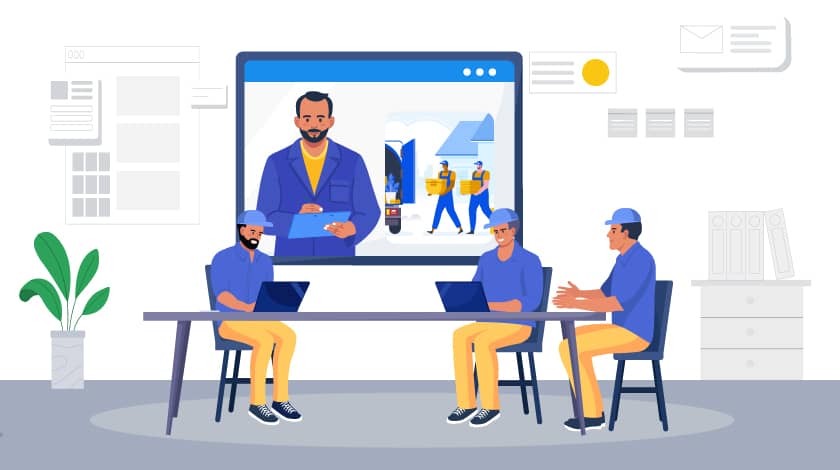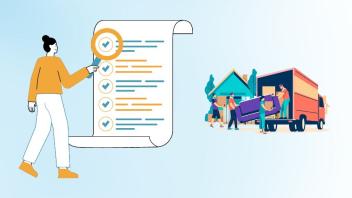Employee Training and Development Tips for Moving Professionals

This blog aims to explore the essential customer service skills vital for success in the packing and moving industry and to offer insights into effective training methods tailored specifically for this sector. From mastering the art of communication to developing a keen sense of empathy, we will delve into the strategies that can elevate your team's performance and set your company apart in a competitive landscape.
Join us as we unpack the secrets to employee training and development tips for success, ensuring that every customer interaction is handled with care, professionalism, and a personal touch that moves beyond mere transactions to create lasting impressions.
The Significance of Customer Service in the Moving Industry

In the competitive landscape of the packing and moving industry, the quality of customer service stands as a pivotal differentiator among companies. Here's a closer look at how superior customer service can set a company apart and the tangible impact it has on customer loyalty and business growth:
The Differentiating Power of Quality Customer Service
- Customer Trust and Confidence: Exceptional customer service builds trust and confidence, transforming routine transactions into memorable experiences. This trust is crucial in the packing and moving industry, where customers are entrusting companies with their most valuable possessions during significant life transitions.
- Brand Differentiation: In a sea of competitors, the level of care and interaction provided by a company can significantly distinguish it from others. Quality customer service elevates a company from being just another service provider to a trusted partner in the moving process.
Impact on Customer Loyalty and Business Growth
- Increased Customer Retention: Studies, such as one conducted by India Today, reveals that 70% of consumers are willing to spend more with companies they feel offer superior customer service. This willingness to spend more underscores the direct link between customer service quality and customer retention rates.
- Enhanced Word-of-Mouth Marketing: Positive customer service experiences lead to increased word-of-mouth recommendations. Customers satisfied with the service they receive are more likely to share their experiences with friends and family, serving as invaluable brand ambassadors.
Key Customer Service Skills for the Moving Companies

In the fast-paced and often uncertain world of packing and moving, certain customer service skills are important to make sure that clients have a good experience and the business runs smoothly. Here are five skills that everyone working in this field needs to have:
1. Effective Communication
Effective and punctual communication is the foundation of successful relocations. It is crucial for managing the organization and implementation of logistics, resolving customer issues, and maintaining communication with all involved parties throughout the relocation process. Here are some strategies for improving communication:
- In-Person and Digital Channels: Utilize a variety of communication channels to reach customers effectively. This includes in-person meetings, phone calls, emails, and even text messaging or chat services for quick updates.
- Active Listening: Practice active listening to fully understand customer needs and concerns, ensuring that responses are thoughtful and solutions are tailored to their specific situations.
- Clarity and Conciseness: Whether communicating verbally or in writing, keep messages clear and concise to avoid misunderstandings and ensure that important details are easily understood.
2. Empathy and Understanding
Moving can be a stressful and emotionally charged experience for many customers. Demonstrating empathy and understanding can significantly ease customer anxieties:
- Acknowledge Emotions: Recognize and validate the customer's feelings and stressors related to the move.
- Personalized Service: Tailor your approach to each customer's unique situation, showing that you care about their individual experience.
- Supportive Communication: Use supportive language that reassures customers and demonstrates your commitment to handling their belongings with care and respect.
3. Detail-Oriented Planning
The success of a move often hinges on the details. Meticulous planning and organization are essential for minimizing disruptions and ensuring a seamless process:
- Checklists and Inventories: Develop comprehensive checklists and inventories to track all aspects of the move, from items packed to tasks completed.
- Regular Updates: Keep customers informed with regular updates on the progress of their move, including any changes to the schedule or plan.
- Team Training: Train your team to pay attention to detail in every task, from packing delicate items to securing loads for transport.
4. Problem-Solving Skills
The ability to quickly and effectively resolve issues as they arise is invaluable in the moving industry, where unexpected challenges are common:
- Anticipate Challenges: Train staff to anticipate potential problems and have contingency plans in place.
- Creative Solutions: Encourage a mindset of creativity and flexibility in problem-solving, allowing team members to find the best solutions under pressure.
- Customer Involvement: When appropriate, involve customers in the problem-solving process to ensure solutions meet their needs and expectations.
5. Physical and Safety Awareness
Proper employee training in safe handling and moving techniques is critical for protecting both the team and the customer's belongings:
- Safety Training: Provide comprehensive training on safe lifting techniques, equipment use, and hazard recognition to prevent injuries and accidents.
- Property Protection: Emphasize the importance of protecting the customer's property during the move, including floors, walls, and doorways, to prevent damage.
- Equipment Use: Ensure team members are trained and comfortable with using any equipment, such as dollies or straps, that can make the move safer and more efficient.
Also read: Post-Move Customer Engagement
Employee Training for Excellence in Moving Services

To help your team perform successfully in the packing and moving business, you need to take a thorough approach that not only gives them the skills they need but also teaches them to always be better and make customers happy. To make a training routine that meets these goals, follow these steps:
1. Customizing Your Training Program
Developing a training program tailored to the unique needs of the packing and moving industry is crucial for preparing your team to handle the challenges they will face. Here are steps to create an effective training program:
- Assess Specific Needs: Start by assessing the specific needs of your business and the roles within your team. Identify the skills and knowledge gaps that need to be addressed.
- Role-Specific Training: Design role-specific training modules for packers, movers, and customer service representatives. Each role has unique responsibilities and requires different skills sets, from physical packing techniques to communication and problem-solving skills.
- Incorporate Industry Insights: Ensure the training program includes the latest industry insights, trends, and standards. This will keep your team informed and capable of delivering top-notch service.
2. Hands-On Training and Simulations
Theoretical knowledge is important, but nothing beats hands-on experience. Practical training sessions that simulate real-life moving scenarios are invaluable:
- Real-World Simulations: Create training exercises that mimic common moving day challenges, such as navigating narrow staircases with large furniture or packing fragile items securely.
- Feedback and Reflection: After each simulation, provide feedback and encourage team members to reflect on their performance. This helps reinforce learning and improve skills.
- Safety Drills: Include safety drills in your hands-on training to ensure your team knows how to prevent injuries and accidents on the job.
3. Fostering a Culture of Continuous Improvement
A culture of continuous improvement ensures that your team remains at the forefront of the industry, adapting to changes and enhancing service quality over time:
- Ongoing Training: Implement regular training sessions to address new challenges, technologies, and industry standards. This keeps your team’s skills sharp and up to date.
- Feedback Loops: Establish feedback loops where team members can share their experiences, challenges, and suggestions. This can inform future training and operational improvements.
- Performance Assessments: Conduct regular performance assessments to identify areas for improvement and recognize outstanding service. Use these assessments to tailor individual development plans.
Evaluating the Impact of Your Employee Training and Development Program

By implementing a systematic approach to assessment, you can identify areas of success and opportunities for further improvement. Here’s how to measure the effectiveness of your training program and make necessary adjustments:
Methods for Measuring Training Program Effectiveness
- Customer Feedback: The most direct indicator of your training program's success is the feedback from those who experience your service firsthand—your customers. Implement a system for collecting customer feedback on various aspects of the service, such as communication, efficiency, and overall satisfaction. Surveys, follow-up calls, or digital feedback forms can be effective tools for gathering this information. For more about customer feedback please read our blog on importance of customer feedback.
- Incident Rates: Monitoring incident rates before and after training interventions can provide tangible evidence of improvement. This includes reductions in accidents, damages to customer property, and other service-related incidents. A decrease in these rates typically indicates that training has effectively enhanced team performance and adherence to safety protocols.
- Employee Confidence and Competence: Assessing employee confidence and competence through self-assessments, supervisor evaluations, and performance reviews can offer insights into the internal impact of your training program. Increased confidence and competence among employees often translate into higher quality service and more positive customer interactions.
Beyond the Move: Crafting Customer Service That Carries
The unique challenges and high-stress nature of moving demand a team that is not only skilled in the logistical aspects of the job but is also adept at navigating the emotional and service-oriented facets of the industry. Effective communication, empathy, meticulous planning, problem-solving, and safety awareness are among the cornerstone skills that define the quality of service in this sector.
Investing in the development of your team through a comprehensive, customized training program is an investment in the future of your business. It's a strategy that pays dividends in enhanced customer satisfaction, reduced incidents, and a reputation for excellence that can set your company apart in a competitive marketplace. We encourage moving companies to view team development not as an expense but as a pivotal component of their business strategy. The benefits of a well-trained, confident, and customer-focused team are immeasurable, contributing not only to the growth of the company but also to the positive experiences of the customers served.











